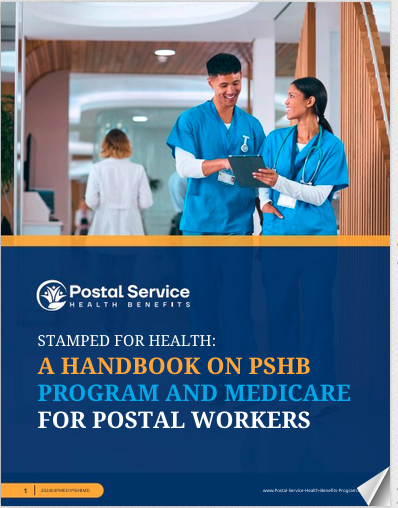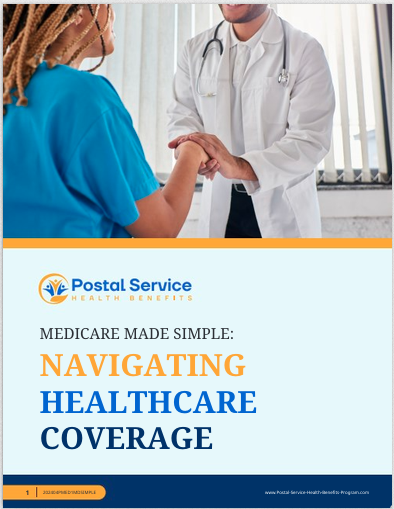Key Takeaways
-
The 2025 Postal Service Health Benefits (PSHB) program introduces significant changes, impacting how you budget for healthcare as a USPS employee or retiree.
-
Understanding Medicare integration and out-of-pocket expenses helps you make the most of your PSHB plan.
Why the 2025 PSHB Program Matters to Your Healthcare Budget
The Postal Service Health Benefits (PSHB) program reshapes healthcare coverage for postal employees and retirees in 2025. If you’re transitioning from the Federal Employees Health Benefits (FEHB) system, you notice changes in plan options, costs, and benefits. These adjustments align coverage with your needs, but they also require careful budgeting and planning. Let’s dive into how PSHB impacts your healthcare finances and how you navigate this new landscape.
PSHB isn’t just about changing the name of your health coverage; it introduces an entirely new way of managing healthcare costs. From integrating with Medicare to offering tailored plans, the program optimizes care while controlling expenses. This overhaul means you actively evaluate your coverage each year, ensuring it matches your financial and healthcare priorities.
Breaking Down the PSHB Transition
What Changes in 2025?
Starting January 1, 2025, PSHB replaces FEHB for postal workers and retirees. While coverage remains robust, several key elements differ:
-
Plan Options: PSHB offers a tailored selection of plans for postal employees, with variations in premiums and benefits. This customization ensures coverage that caters specifically to the postal workforce, something not always prioritized under FEHB.
-
Medicare Integration: Medicare-eligible retirees enroll in Medicare Part B to maintain PSHB coverage, unless exempt. This requirement ensures comprehensive coverage, especially for those with higher healthcare needs.
-
Cost Structures: Premiums and out-of-pocket expenses complement Medicare benefits, reducing overall costs for Medicare-enrolled individuals. This change streamlines healthcare expenses, making budgeting more predictable.
These changes mean more personalized healthcare options but also demand a more hands-on approach to managing your benefits.
Understanding Medicare Requirements
Do You Need Medicare?
Under PSHB, Medicare-eligible retirees and family members enroll in Part B, unless they meet specific exemptions. This integration aims to:
-
Lower your out-of-pocket expenses for medical services by ensuring that Medicare acts as your primary insurer.
-
Offer enhanced benefits, such as reduced deductibles and coinsurance, when combined with PSHB plans.
-
Simplify billing processes, reducing the administrative burden often associated with multiple health plans.
Exemptions
You’re exempt from the Medicare Part B requirement if:
-
You retired on or before January 1, 2025, and haven’t enrolled in Medicare Part B.
-
You’re aged 64 or older as of January 1, 2025.
If you qualify for an exemption, your PSHB plan functions independently, though you may miss out on cost-saving opportunities tied to Medicare integration.
Budgeting for Healthcare Costs
Premium Contributions
PSHB premiums vary based on your selected plan. While government contributions remain significant, it’s essential to compare options during Open Season to find a plan that fits your budget. Premiums fluctuate depending on the level of coverage and the extent of benefits provided. A careful analysis of plan details saves you money over time.
Out-of-Pocket Costs
Expect out-of-pocket expenses such as deductibles, copayments, and coinsurance. PSHB’s integration with Medicare often results in reduced overall costs for those enrolled in both programs. For example, if Medicare covers a significant portion of your hospital expenses, your PSHB plan may take care of the rest, minimizing your financial exposure.
Prescription Drug Coverage
All Medicare-eligible PSHB enrollees receive prescription drug coverage through a Medicare Part D Employer Group Waiver Plan (EGWP). This plan eliminates the “donut hole” and caps annual out-of-pocket costs at $2,000, providing financial relief for high medication expenses. For those with ongoing prescriptions, this cap ensures predictable and manageable costs throughout the year.
Planning for these costs and leveraging the $2,000 cap helps you stay on budget without compromising on necessary treatments.
Maximizing Benefits Through PSHB
Choosing the Right Plan
During Open Season, compare PSHB plans to ensure they align with your healthcare needs and budget. Factors to consider include:
-
Monthly Premiums: Evaluate how much you pay out of pocket each month versus the benefits you receive.
-
Coverage: Check for specific benefits like vision, hearing, or dental services that may be essential for you or your family.
-
Provider Networks: Ensure your preferred doctors and facilities are included to avoid unexpected costs or disruptions in care.
The more informed you are about these details, the better equipped you are to make a choice that supports your health and financial goals.
Take Advantage of Medicare Benefits
If you’re enrolled in Medicare, you enjoy:
-
Lower Premiums: Many PSHB plans offer Part B premium reimbursements, which offset costs.
-
Reduced Deductibles: Some plans waive deductibles for Medicare-enrolled members, simplifying your financial obligations.
-
Comprehensive Coverage: Combining PSHB with Medicare creates a broader safety net for your healthcare needs, offering peace of mind.
These benefits highlight why integrating Medicare with your PSHB plan is a crucial step for eligible retirees.
Common Questions About the PSHB Program
How Do I Enroll?
Enrollment for PSHB occurs during Open Season or after a Qualifying Life Event (QLE). Most employees and retirees are automatically transitioned to a corresponding PSHB plan for 2025. However, it’s vital to review your plan details to confirm it meets your expectations. This proactive step ensures you’re not caught off guard by coverage gaps or unexpected costs.
What Happens If I’m Not Enrolled in Medicare Part B?
If you’re Medicare-eligible and choose not to enroll in Part B, you may lose PSHB coverage. Exemptions apply, but it’s critical to understand your eligibility. Losing coverage could result in higher healthcare costs, so be sure to address this requirement promptly.
Adjusting Your Healthcare Budget
Plan for Monthly Costs
With premiums and Medicare Part B costs, budgeting becomes more predictable. Make sure to:
-
Account for monthly deductions from your paycheck or retirement benefits.
-
Allocate funds for copayments and coinsurance, as these smaller costs add up over time.
Save for Out-of-Pocket Expenses
While the $2,000 cap on prescription drug costs provides relief, other out-of-pocket costs arise. Set aside a portion of your budget for unexpected medical expenses, such as emergency room visits or specialist consultations.
Leverage Preventive Services
Most PSHB plans cover preventive care at no additional cost. Regular checkups and screenings help you avoid costly treatments down the road. Taking advantage of these services ensures you stay healthy while keeping your healthcare spending in check.
Key Dates to Remember
-
Open Season: October 15 to December 7 annually. Use this period to review and adjust your plan if needed.
-
Medicare Enrollment Period: If you missed your Initial Enrollment Period, the General Enrollment Period runs from January 1 to March 31, with coverage starting July 1.
Keeping track of these timelines ensures you’re always prepared to make the best decisions for your healthcare.
Your Healthcare Budget Made Simple
The 2025 PSHB program simplifies healthcare planning by aligning costs with benefits. By understanding your options and maximizing Medicare integration, you keep your healthcare budget on track while enjoying comprehensive coverage. With thoughtful preparation, the program allows you to focus less on expenses and more on maintaining your health and well-being.







